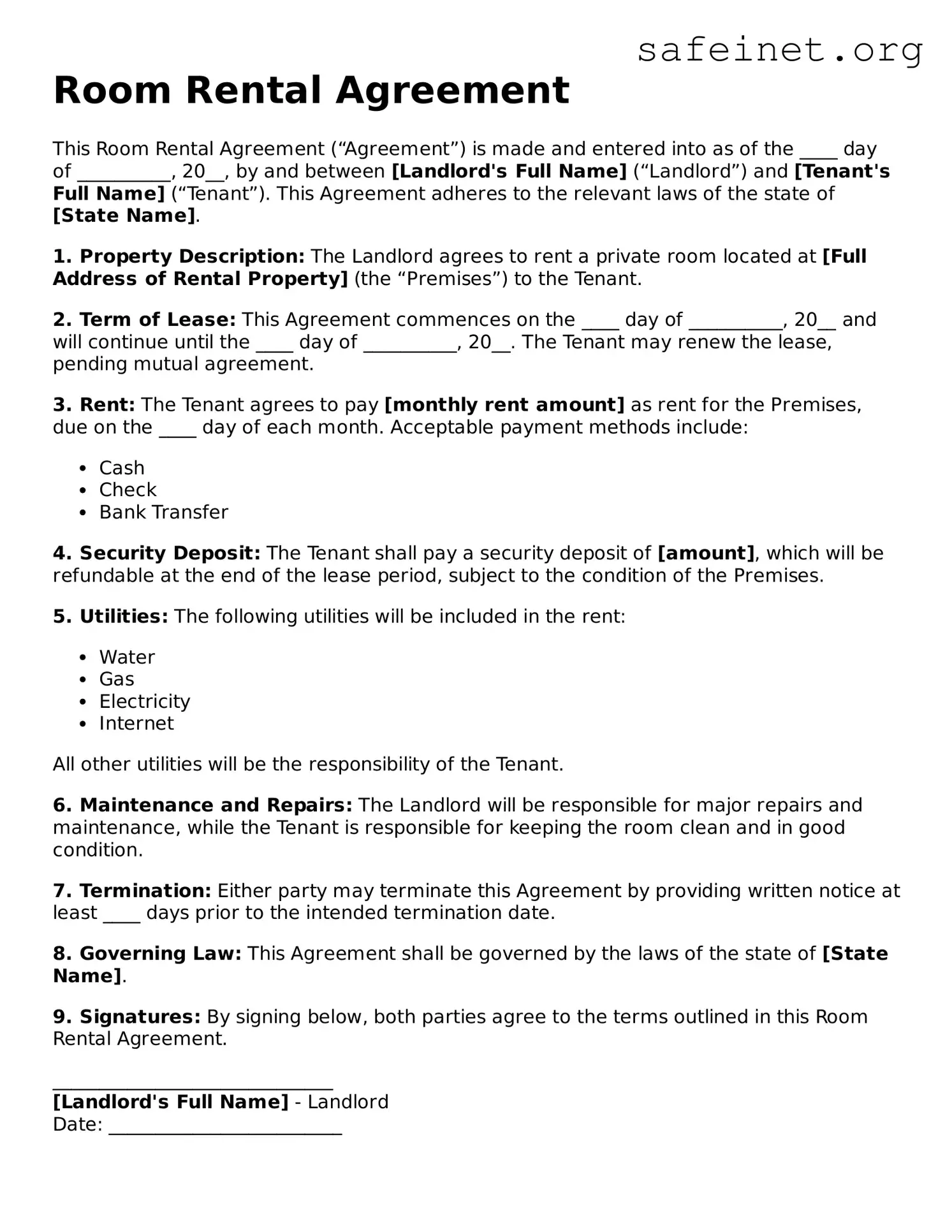Room Rental Agreement
This Room Rental Agreement (“Agreement”) is made and entered into as of the ____ day of __________, 20__, by and between [Landlord's Full Name] (“Landlord”) and [Tenant's Full Name] (“Tenant”). This Agreement adheres to the relevant laws of the state of [State Name].
1. Property Description: The Landlord agrees to rent a private room located at [Full Address of Rental Property] (the “Premises”) to the Tenant.
2. Term of Lease: This Agreement commences on the ____ day of __________, 20__ and will continue until the ____ day of __________, 20__. The Tenant may renew the lease, pending mutual agreement.
3. Rent: The Tenant agrees to pay [monthly rent amount] as rent for the Premises, due on the ____ day of each month. Acceptable payment methods include:
4. Security Deposit: The Tenant shall pay a security deposit of [amount], which will be refundable at the end of the lease period, subject to the condition of the Premises.
5. Utilities: The following utilities will be included in the rent:
- Water
- Gas
- Electricity
- Internet
All other utilities will be the responsibility of the Tenant.
6. Maintenance and Repairs: The Landlord will be responsible for major repairs and maintenance, while the Tenant is responsible for keeping the room clean and in good condition.
7. Termination: Either party may terminate this Agreement by providing written notice at least ____ days prior to the intended termination date.
8. Governing Law: This Agreement shall be governed by the laws of the state of [State Name].
9. Signatures: By signing below, both parties agree to the terms outlined in this Room Rental Agreement.
______________________________
[Landlord's Full Name] - Landlord
Date: _________________________
______________________________
[Tenant's Full Name] - Tenant
Date: _________________________
